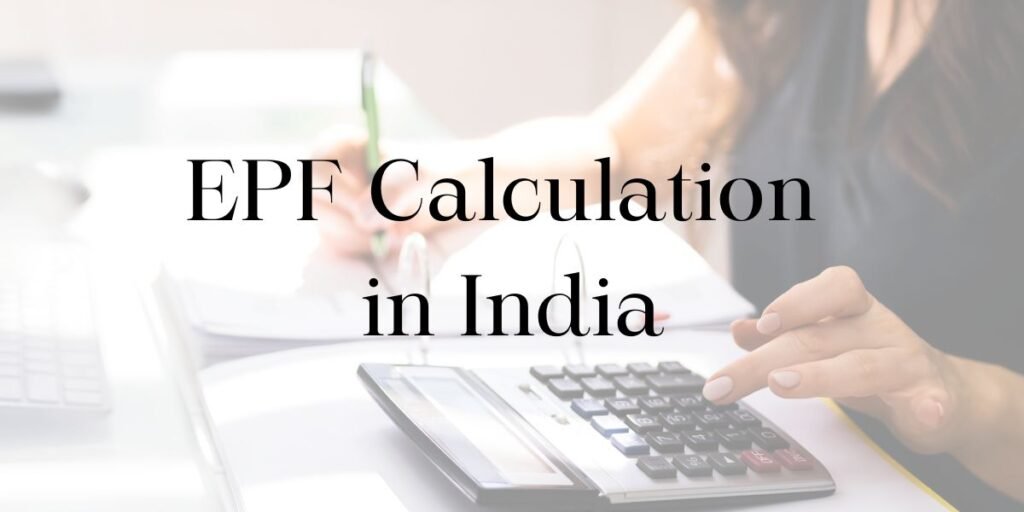Social security stands tall as a crucial pillar in contemporary society, offering vital protection and support to individuals.
The Indian social security system dates back to 1925 with the enactment of the inaugural Provident Fund Act.
As a result of this landmark legislation, Indians now have a solid retirement program, which has become a lifeline for millions.
What is EPF?
The EPF, a retirement scheme instituted by the Employees Provident Fund Organisation (EPFO), is applicable to individuals employed in private companies with a staff count of 20 or more.
As per the scheme’s provisions, both the employee and the employer contribute a fixed portion of the salary to the fund every month. Upon retirement, the employee has the option to withdraw a lump sum, inclusive of accrued interest.
Decoding EPF Calculation: A Step-by-Step Guide
To comprehend EPF calculation on salary, let’s break down its three main components:
Employee’s Contribution
Constituting 12% of the Basic Salary, including Dearness Allowance, the employee’s contribution is a crucial aspect. For instance, if the salary amounts to ₹20,000, the employee’s contribution would be 12% of ₹20,000, equating to ₹2,400.
Employer’s Contribution
The employer’s contribution is divided into two parts: ₹734 (3.67% of ₹20,000) allocated to the employee’s fund and ₹1,666 (8.33% of ₹20,000) contributed to the Employee Pension Scheme.
Interest
The EPF interest rate, fixed by EPFO, stands at 8.1% for FY 2022-23. Monthly interest is computed on the total contribution, e.g., ₹3,134 (₹2,400 + ₹734), at 8.1% p.a., resulting in ₹21.15.
Consideration is given to any existing balance in the EPF account for interest computation. This calculation repeats for subsequent months.
Unlocking the Benefits of PF Contribution
- Retirement Savings: PF contributions serve as a financial safety net, ensuring security during old age.
- Employer Contribution: Employers bolster the PF account, augmenting the overall savings pool.
- Tax Benefits: Both employee and employer contributions qualify for tax deductions under Section 80C of the Income Tax Act.
- Compound Interest: PF accounts accrue compound interest, facilitating savings growth over time.
- Loan Facility: Members can access loans against their PF balance for various needs like home purchases, education, or medical emergencies.
- Early Withdrawals: Partial withdrawals are permissible for specific purposes such as home buying, medical treatment, or marriage.
- Nomination Facility: Members can nominate family members to receive the accumulated PF corpus in the event of the member’s demise.
- Transferable: PF accounts are portable, allowing seamless transfers when changing jobs.
- Post-Retirement Income: Members can opt for a pension through the Employees’ Pension Scheme (EPS) post-retirement.
Tax Advantages of PF Contribution
Key tax benefits associated with Provident Fund contributions include:
- Tax Deduction under Section 80C: Employee contributions are eligible for a tax deduction under Section 80C, up to ₹1.5 lakh per financial year, reducing taxable income and lowering income tax liability.
- Tax-Free Interest: Interest earned on EPF contributions is tax-free, exempt from income tax.
- Tax-Exempt Withdrawals: Withdrawals post five years of continuous service are tax-exempt. However, withdrawals before five years may incur tax implications.
- No TDS on Withdrawals: No Tax Deducted at Source (TDS) applies to PF withdrawals after five years of continuous service.
In conclusion, understanding and optimizing your EPF contributions not only secure your financial future but also unlock valuable tax advantages. Stay informed, plan wisely, and make the most of your EPF benefits for a prosperous retirement.
